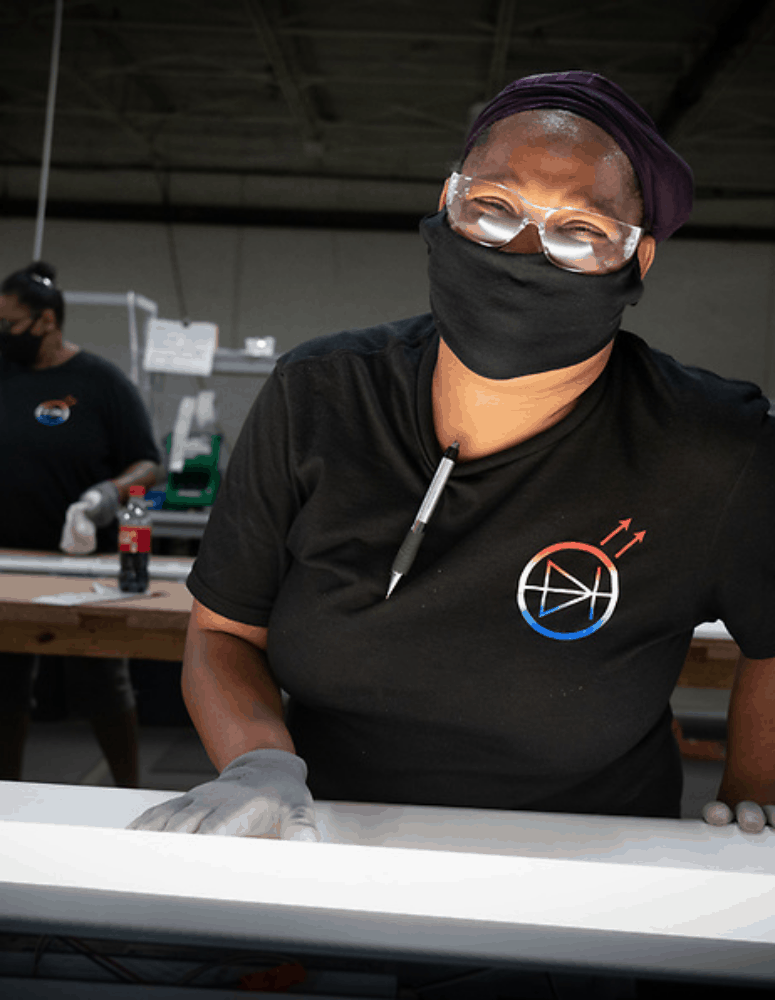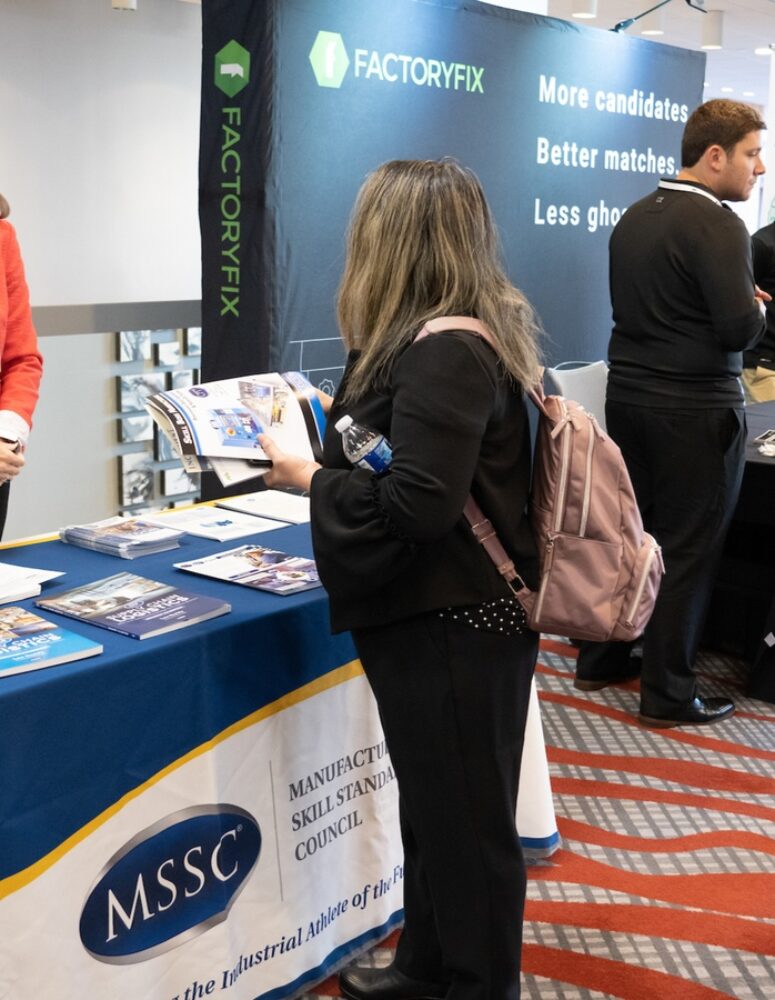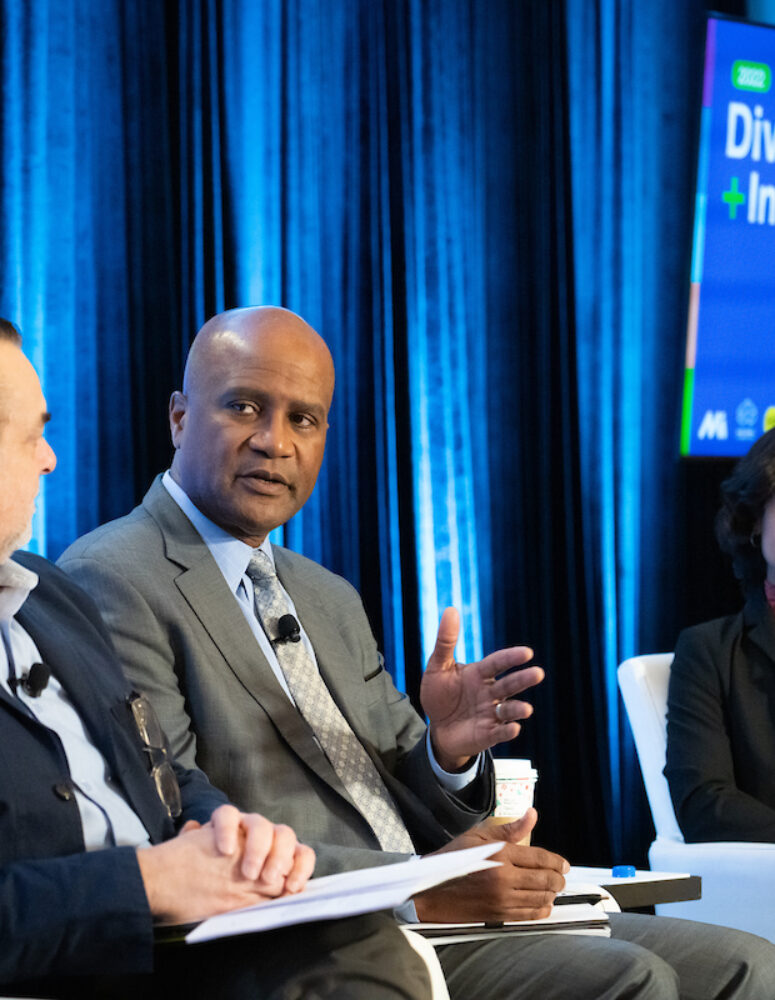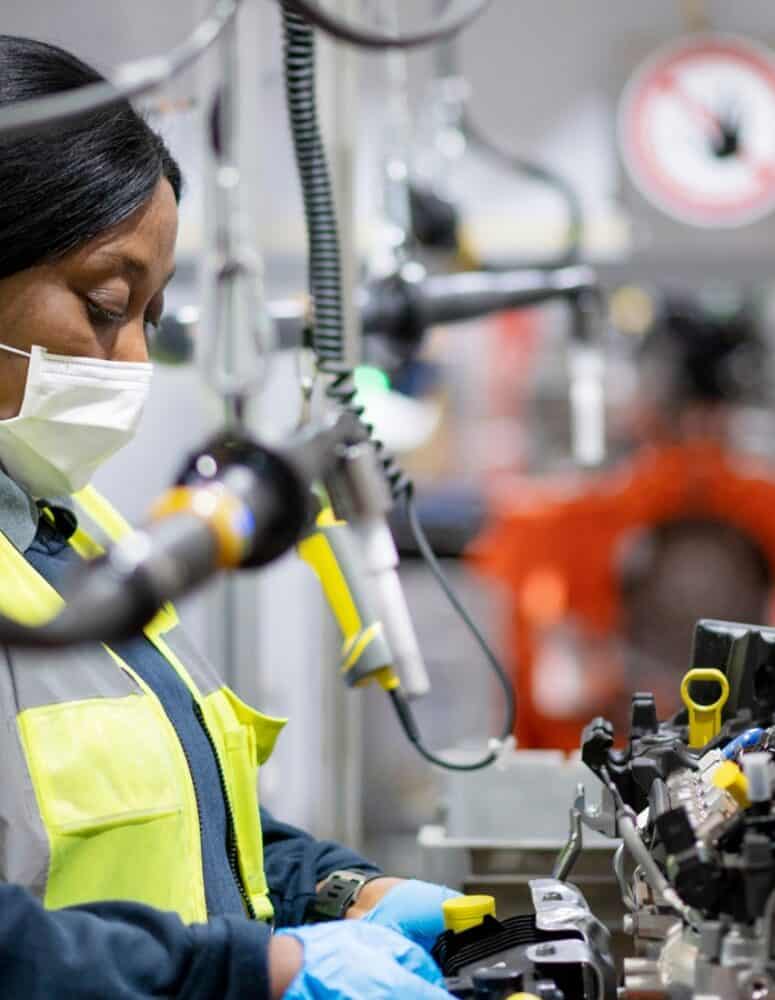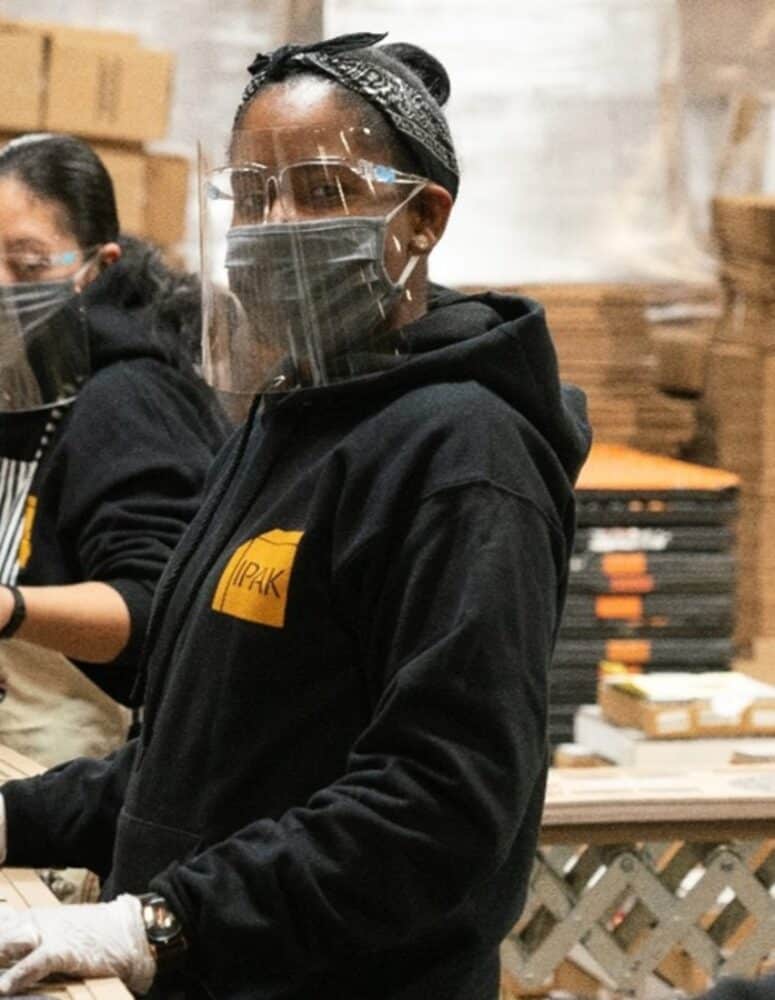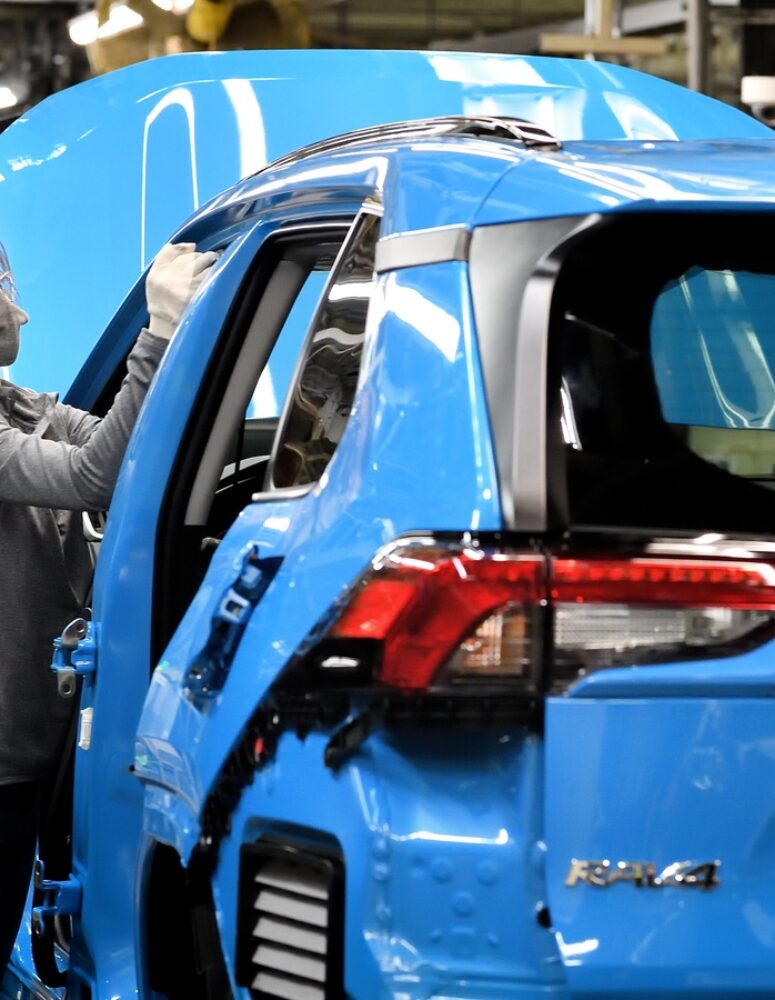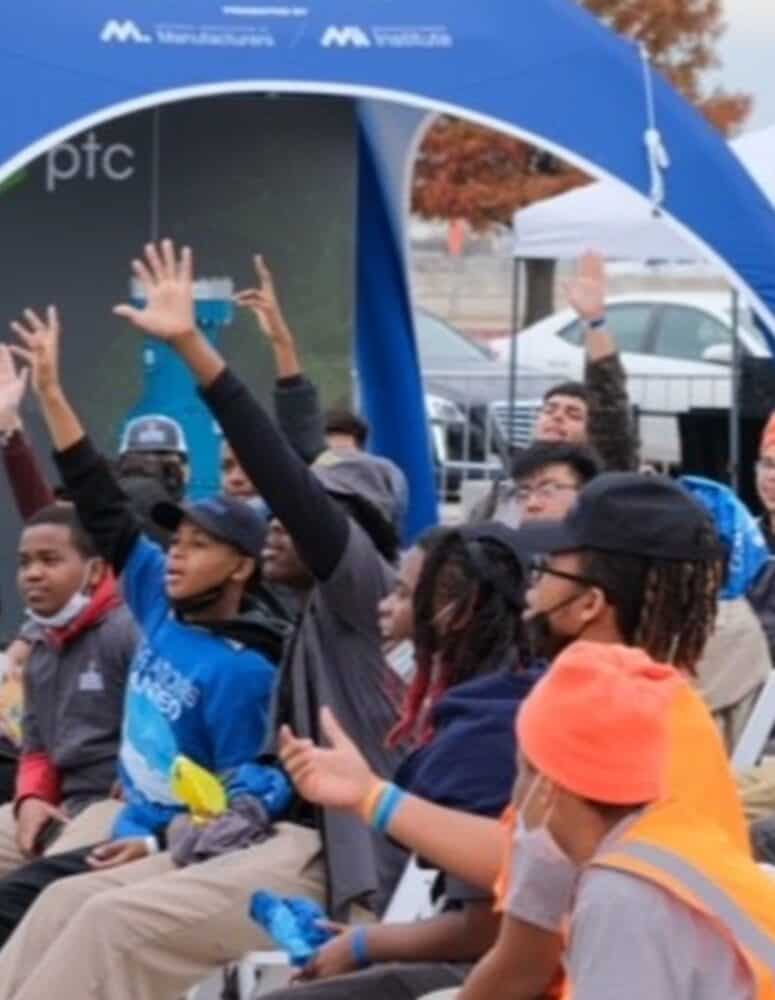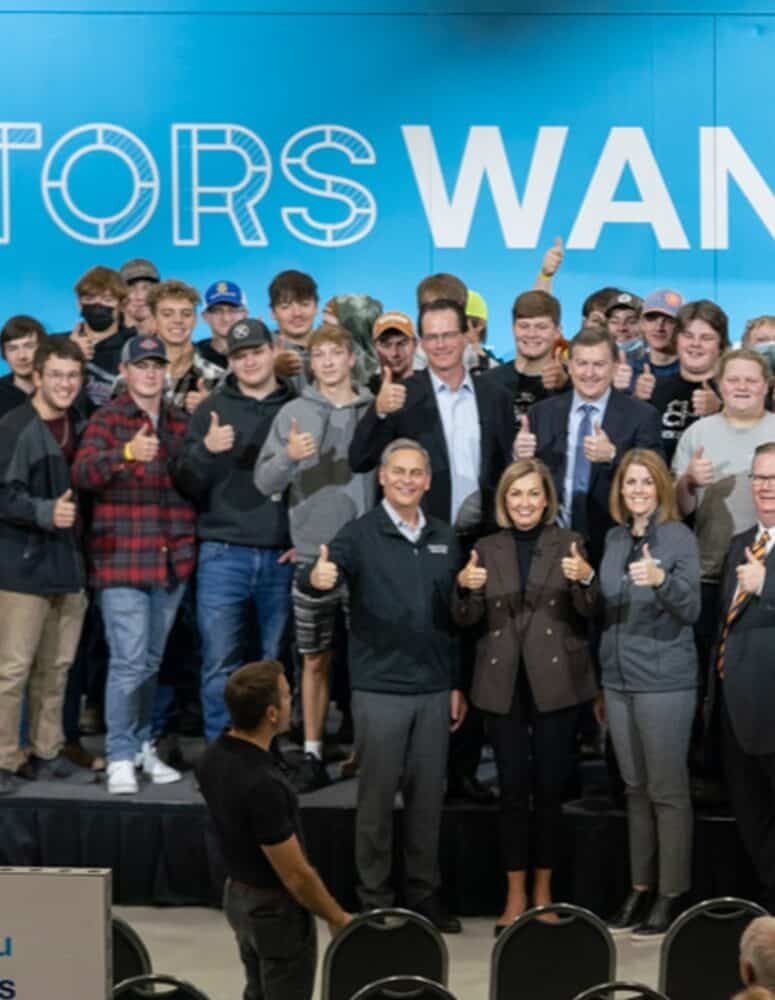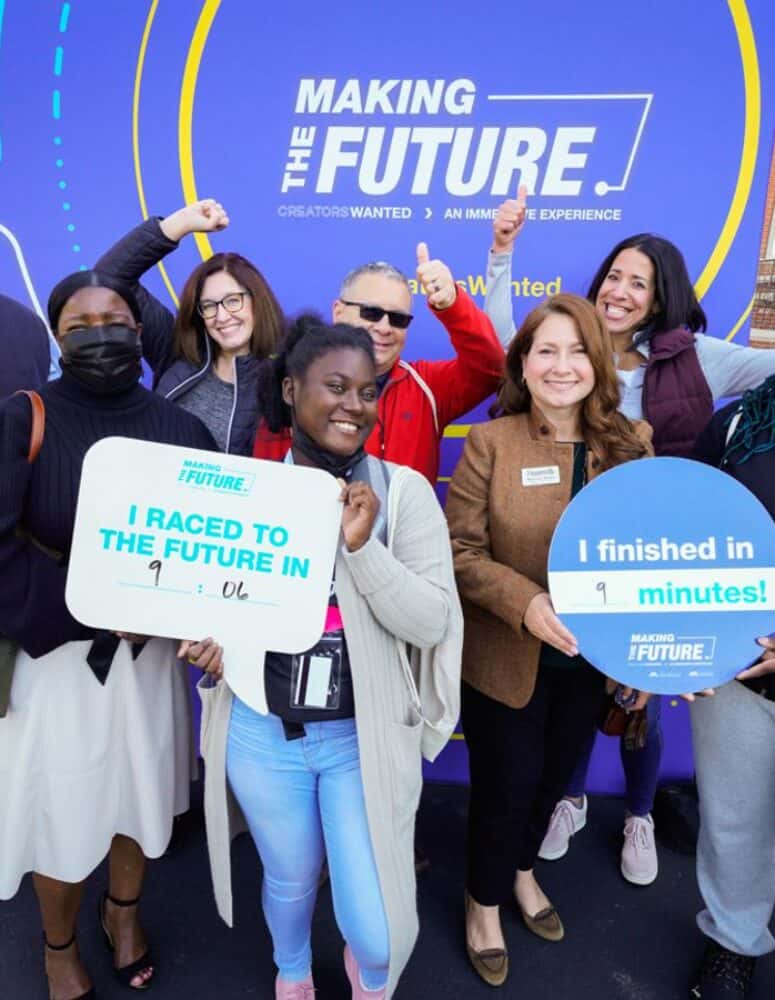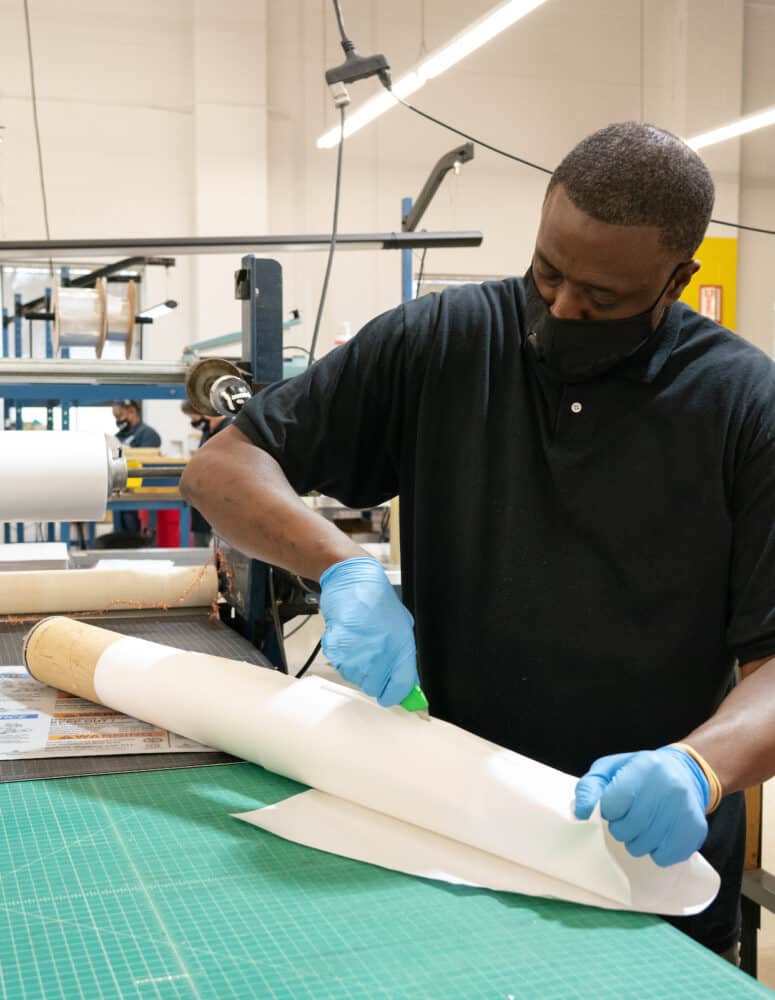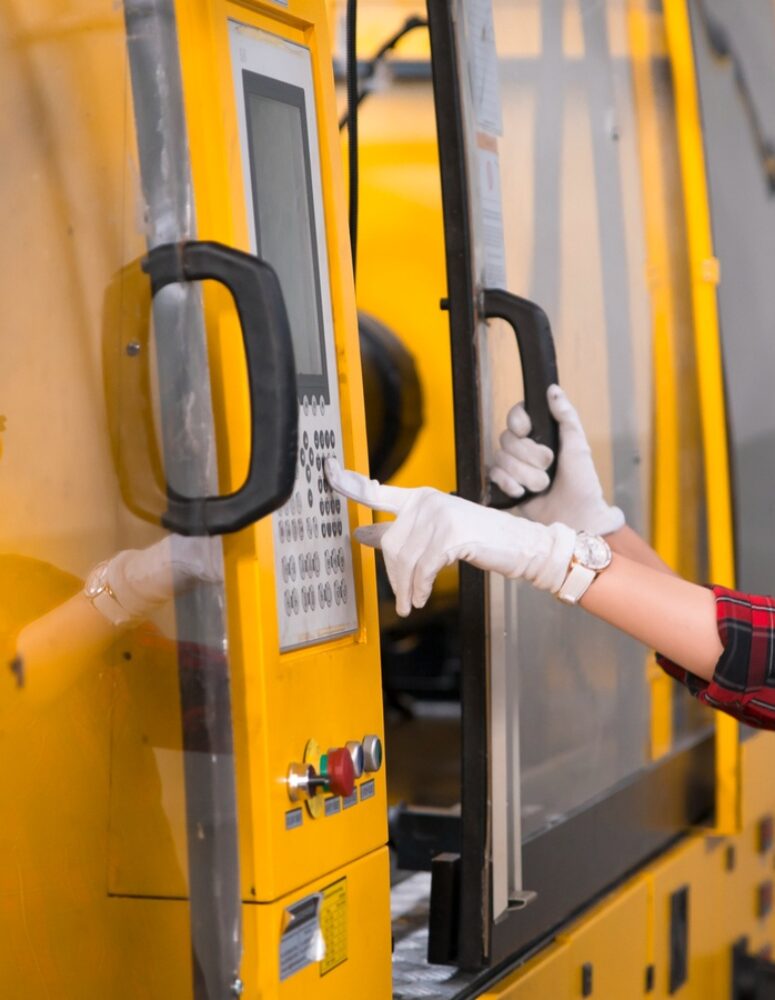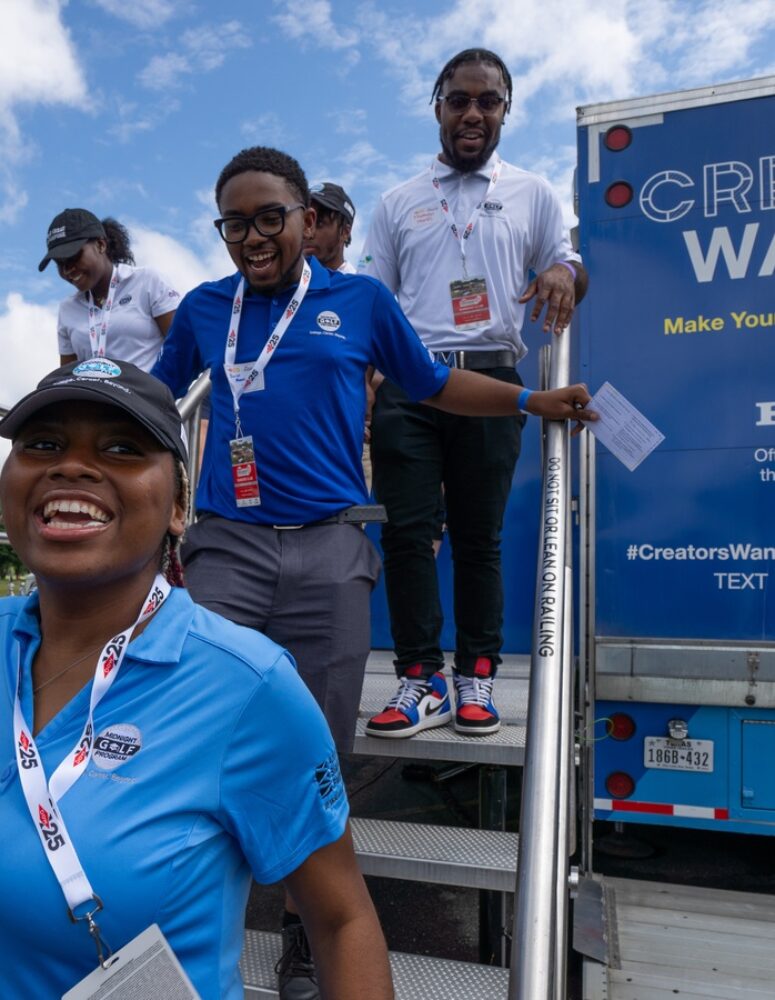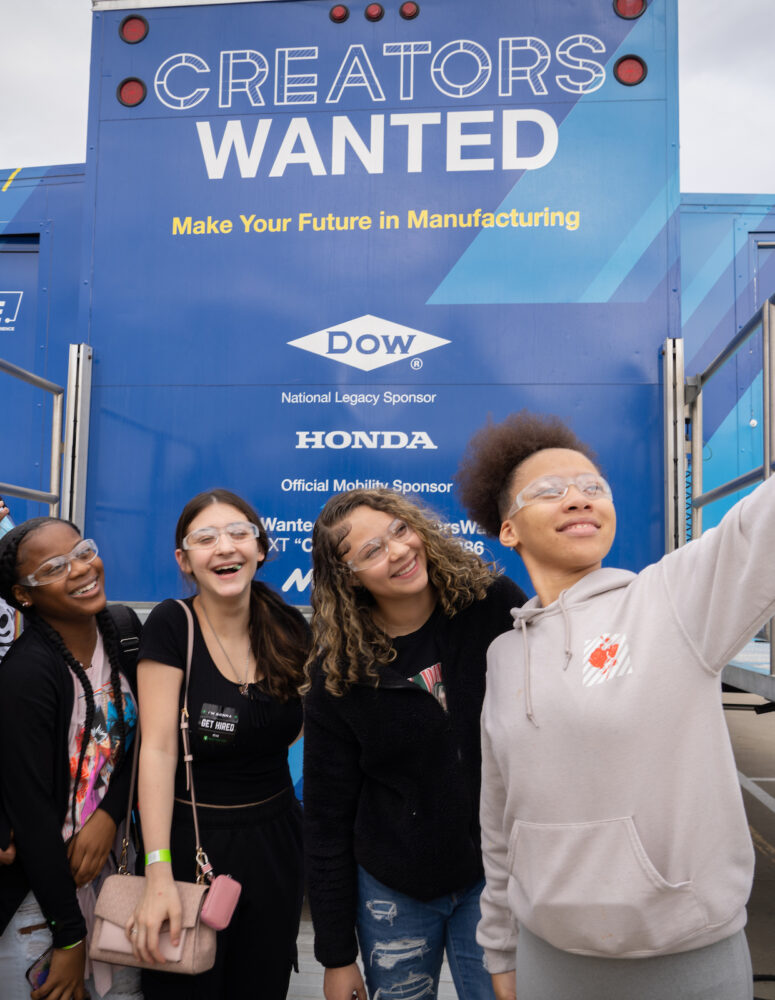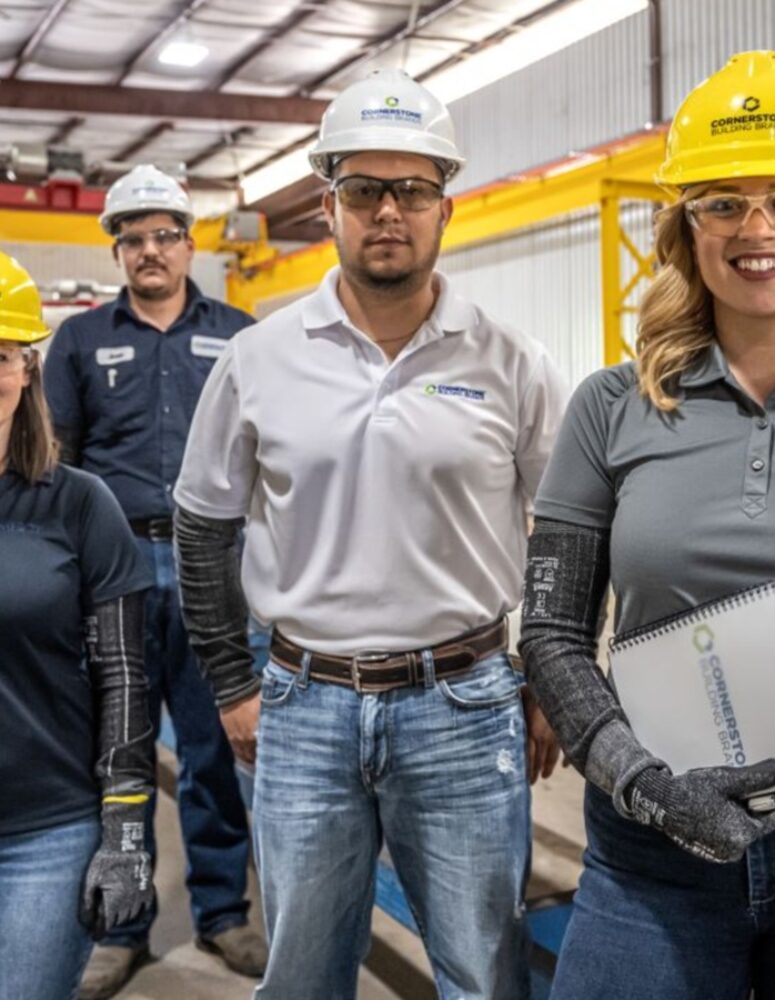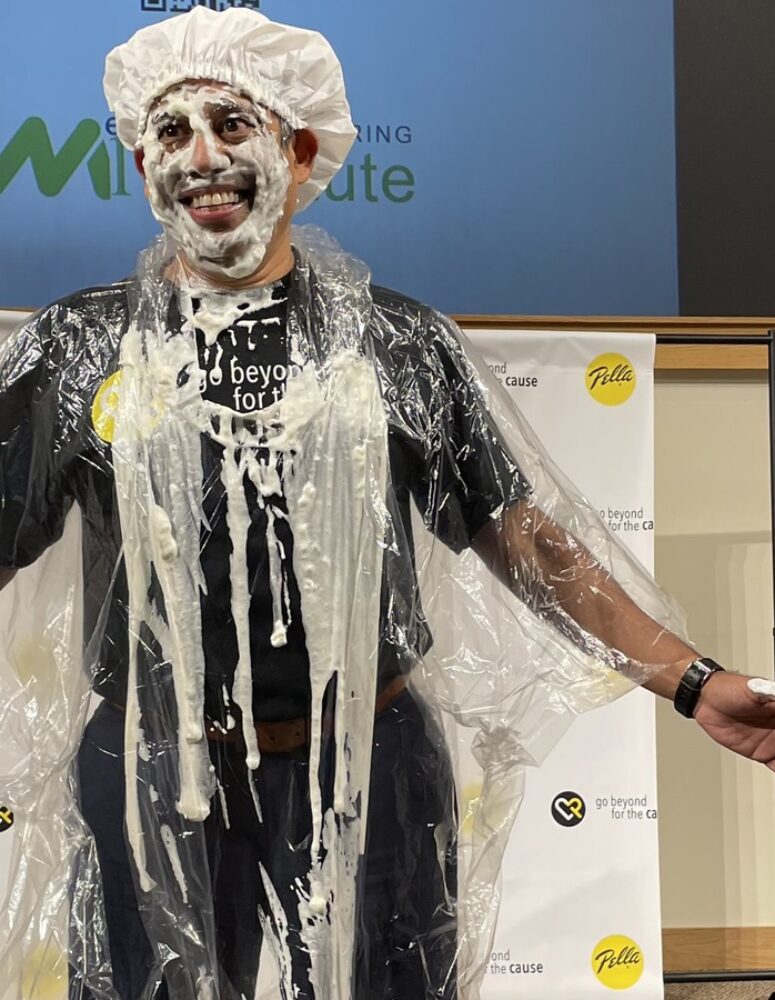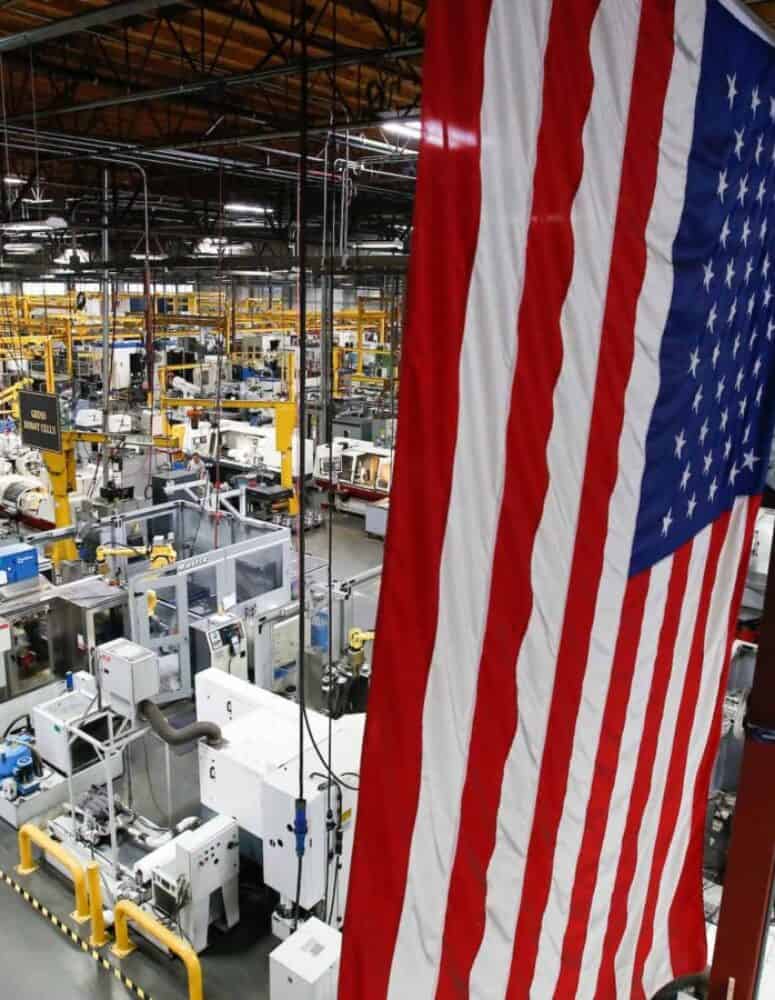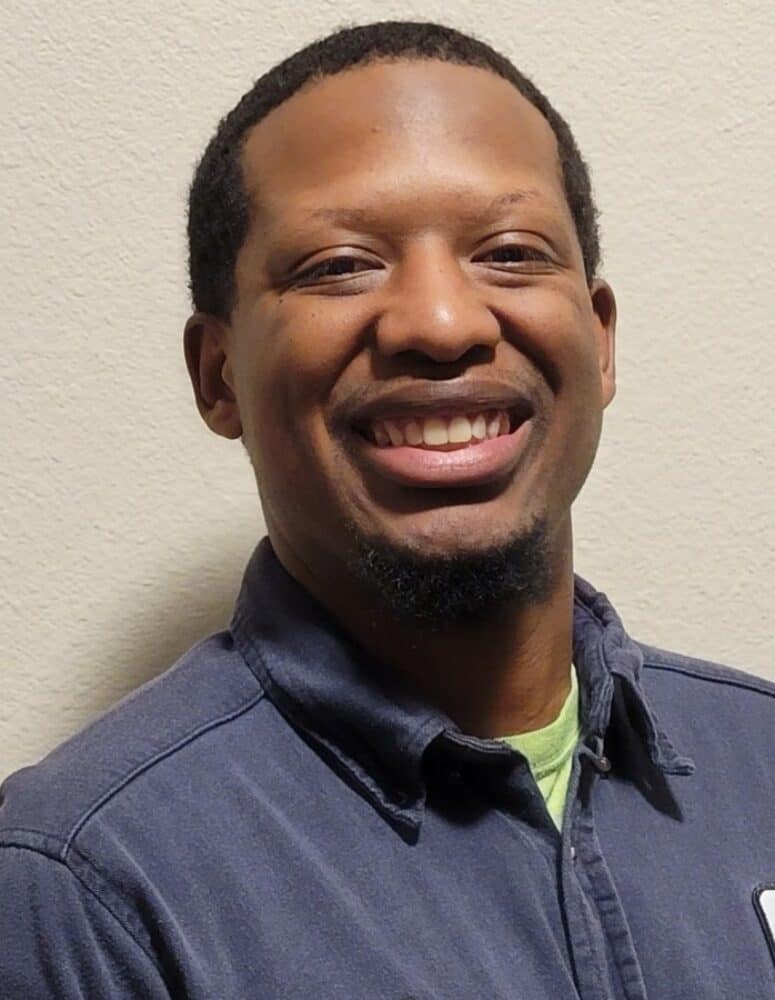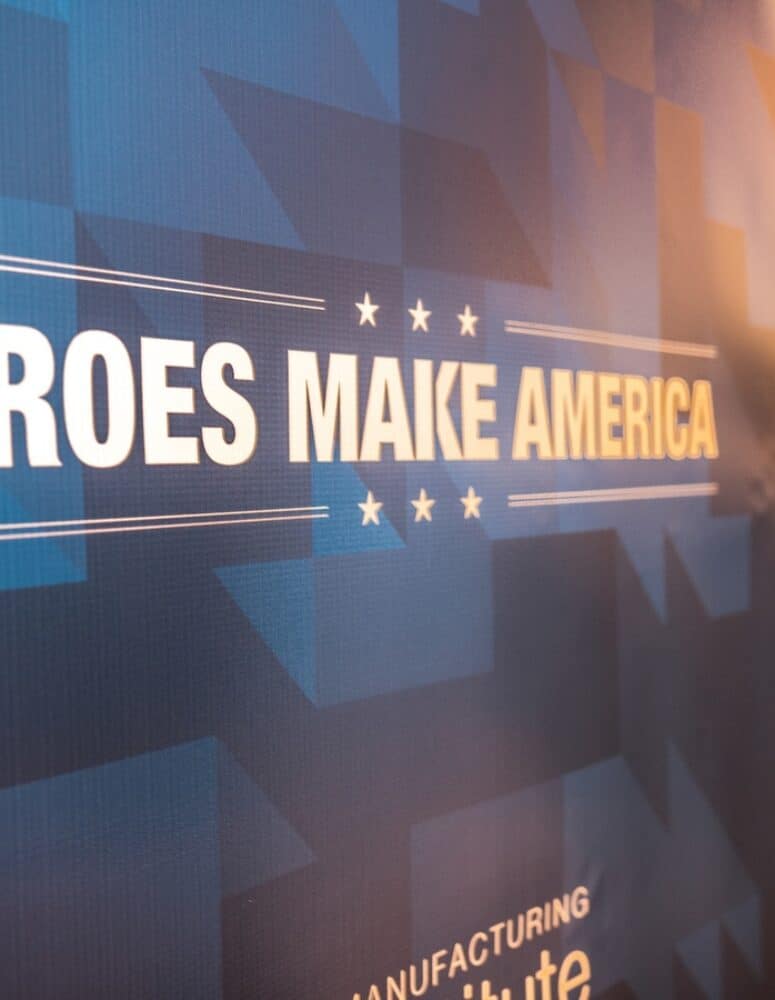D+I In-Person and Virtual Summit
On December 1, the MI held its third annual D+I Summit in Washington, D.C. Attendees were provided with tools and shared experiences needed to create inclusive and equitable workplaces. Strong leaders in this space helped guide the discussions on implementing change and making an impact.
Key Takeaways
- Employee Resource Groups Session (ERGs) – Attendees heard from leaders at McCormick & Company and Pella Corporation on how to create and support employee resource groups. The conversation covered utilizing ERGs as a business imperative, what leadership’s role within ERGs can look like, the process to establish and maintain ERGs, different logistics of ERG maintenance (budgets, roles, and so forth), and more.
- Executive Panel Discussion – Attendees heard from three leaders from Merck, Honeywell, and Armstrong World Industries on how manufacturers are promoting diversity and leveraging inclusion in the communities they operate in. The conversation included reviewing each company’s D&I initiatives and best practices in creating an inclusive workplace that have been implemented, as well as different D&I trainings and advice to fellow manufacturers looking to get started with D&I.
Want to hear these sessions and learn more? You can view a recording of the Virtual D+I Summit here.
What Foundations and Corporate Donors Are Looking For
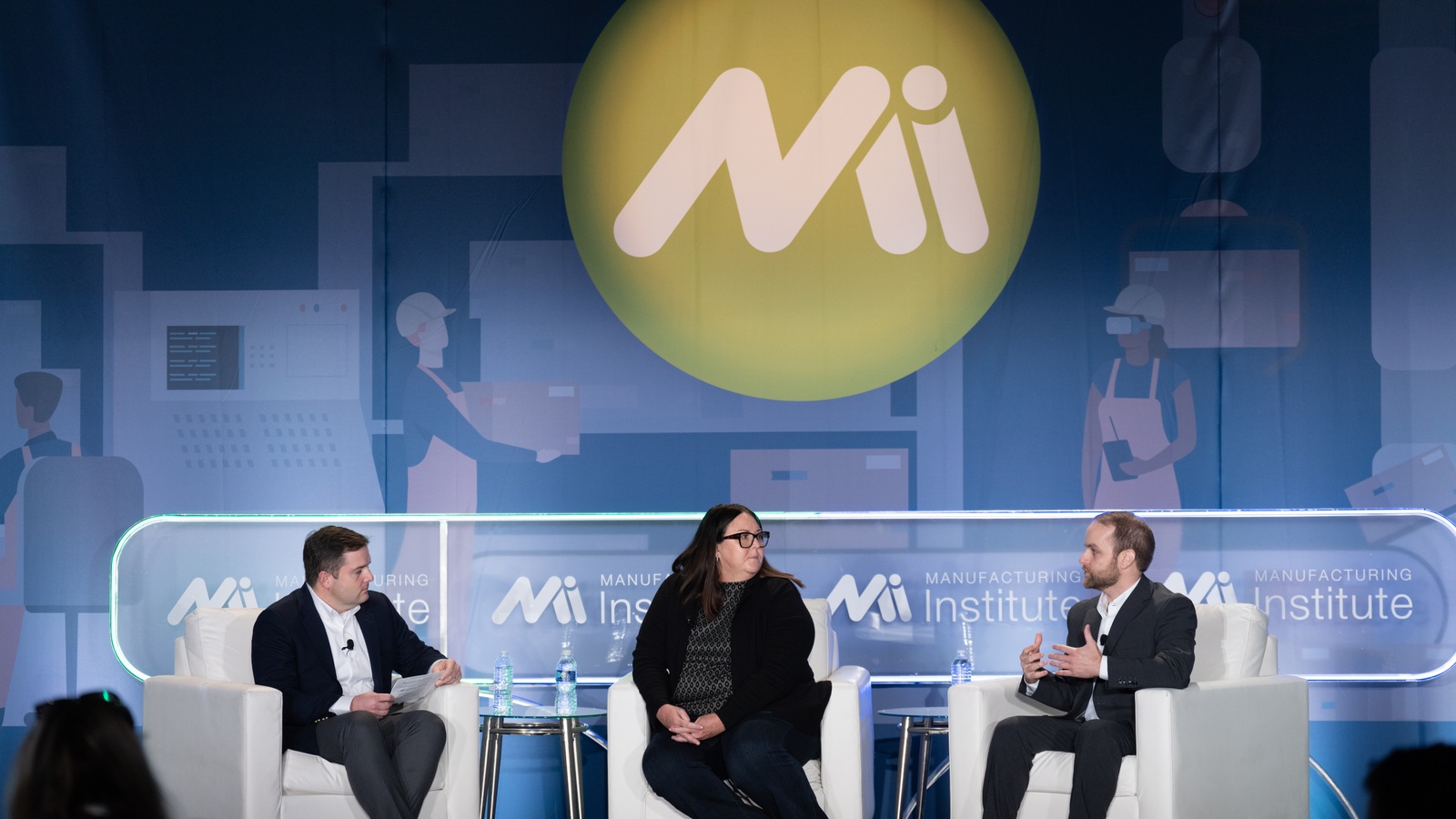
Many manufacturers pour their time and money into bolstering local programs for young people, hoping to shape the next generation of manufacturing workers. But how do they determine which organizations to work with, and how should those organizations attract their attention?
At the Manufacturing Institute’s inaugural Workforce Summit, held in Cincinnati back in October, panelists from WestRock Company and Arconic Foundation shared tips for those seeking to build partnerships with potential donors.
Top of mind: Education and workforce development, environment sustainability and social equity are all funding priorities, according to the panelists. Foundations and corporate donors are interested in programs that benefit local communities and reflect their organizations’ values.
- Mandy Burnette, director of corporate giving at WestRock, emphasized that the company looks for organizations that are capable of building a long-term relationship. As she put it, “We don’t give. We don’t donate. We invest in strategic partners.”
The perfect partner: Burnette and Arconic Foundation President and Treasurer Ryan Kish discussed what they look for when making funding decisions.
- A track record of success. Can the program be replicated successfully elsewhere? If so, that’s a huge plus, according to Kish. “A great example of this is FAME,” he added, referring to the workforce development program founded by Toyota and now operated by the MI. “You don’t need to convince me that FAME works. … If I have an opportunity to replicate FAME in one of our communities, I’m going to jump on that.”
- Impact: Kish said that he was drawn to the MI’s 35 x 30 campaign because he recognized that it was impactful. “It not only aligns with our funding priorities, but it’s going to affect a huge number of women and increase [the number of] women in the workplace. That’s what we’re after.”
Taking that first step: Both Burnette and Kish agreed that organizations should talk to their local connections, who will be able to steer them to the right decision-maker in a company or foundation.
- “If you’re reaching out, have a tight story,” Kish said. “Have your project activities, your budget, your timeline and impact story well-defined when you come to a local contact so that it grabs their attention and gets them engaged with you.”
Think long term: Beyond just focusing on attracting talent for jobs of today, foundations and companies are looking increasingly to support initiatives that build talent pipelines for the future.
- “All we’re doing right now [as an industry] is fighting over the same scarce talent,” Kish said. “Take the opportunity to make an investment in early STEM education to build the pipeline, so you’re not dealing with the same problem in 5 and 10 years.”
The last word: The best way to start thinking through partnerships? “Know your end result and then back into it. That’s what we did with our strategy. We knew what we were trying to accomplish and achieve, and then we backed into it and thought about the partners that could help us get to the results that we wanted,” Burnette said.
Manufacturers Should Hire Neurodiverse Workers—Here’s Why and How

Creators are always wanted in manufacturing, and those who bring new perspectives due to their neurological differences can be some of the most valuable.
That was one key takeaway from the Diversity + Inclusion Summit held this month by the Manufacturing Institute (the NAM’s workforce development and education partner). Dr. Keivan Stassun, director of the Frist Center for Autism and Innovation at Vanderbilt University, discussed the benefits of hiring neurodiverse workers, sharing tips on optimizing the hiring process for these workers as well as setting them up for success. Here’s some of his advice.
Why it matters: As manufacturers look for more workers to fill their hundreds of thousands of open positions, they are considering people of many different backgrounds and talents.
- Neurodiverse workers, who may include those with autism, Down syndrome, ADHD or other neurological conditions, have a wide range of abilities and perspectives and can enrich manufacturers’ operations.
- Stassun spoke from personal experience: at the Frist Center research lab, autistic individuals working with the proper support created a data visualization software that has been licensed by NASA, and also patented a technology for mining asteroids.
The benefits: “There are two broad categories of strengths that neurodiverse talent brings to the table—visual cognitive abilities and process/efficiency improvement,” said Stassun.
- Visual cognitive abilities can include skills such as pattern recognition and outlier detection, which can be useful in quality assurance tasks as varied as inspecting batteries coming off an assembly line, surveilling financial records for fraudulent or improper activity or stocking crash carts in emergency rooms.
- Process/efficiency improvement abilities emerge from neurodiverse workers’ atypical or novel perspectives, which help them identify out-of-the-box solutions. As Stassun explained, “Neurodiverse individuals can look at a process and abstract it into a flow chart to find ways to increase efficiencies that no one else would have even thought of.”
How to get started: Stassun recommends that companies try a small pilot program before rolling out a company-wide hiring initiative. He had a few key tips for the recruitment process:
- During the job interview stage, recruiters should be aware of ways in which neurodiversity can differ from neurotypical behavior. For example, interviewees may make minimal eye contact and use extremely direct verbal communication.
- To set neurodiverse workers up for success, companies should examine the sensory environment of their workplaces. Though workers’ needs will vary, they may be sensitive to light, temperature or noise and need certain accommodations, which should be arranged from the outset of employment.
Resources: Stassun offered two resources that will help companies find and retain neurodiverse talent:
- Mentra, a neurodiversity employment network that recruiters can search, and which allows neurodiverse individuals to share their backgrounds and strengths with employers.
- The Autism @ Work Playbook, which details how to create a supportive work environment for autistic individuals.
In addition, the MI provided other useful information in its recent D&I Roundtable on recruiting and retaining employees with neuro differences, which you can view here.
The last word: As Stassun noted, “Innovation often comes from the edges. From a human capital perspective, it’s a really exciting opportunity.”
Manufacturers Offer More Flexibility, Child Care to Workers

How can companies provide workers with the flexibility and support they seek? This question has become increasingly pressing for manufacturers as they compete in a tight labor market, and many have come up with their own innovative answers.
Recently, the Manufacturing Institute—the workforce development and education partner of the NAM—hosted a panel with leaders from Toyota, Cornerstone Building Brands, Pioneer Service Inc. and 3M about the child care benefits they offer and how they are reconceiving flexibility.
Child care: The companies provide a variety of different services to their team members, according to the speakers, to account for varying needs.
- Toyota offers a comprehensive suite of services that includes onsite child care at select locations, emergency backup care, tutoring and counseling services.
Flexible options: Though these manufacturers run complex operations, they are increasingly empowering workers to shape their own days. For example:
- At Cornerstone, office workers come into the office one day a week on the same day. Hourly workers are also offered flexibility—they can take part-time shifts in nonstandard times.
- 3M’s “Work Your Way” program is a trust-based system that allows nonproduction employees to designate the way they want to work, whether that’s in person, remote or hybrid. 3M is considering expanding the program to individuals working in laboratories and on the production floor.
- Pioneer emphasizes cross-training to increase flexibility for all their workers. By training more employees on critical skills, employees can take time off or work more flexible schedules because they now have coverage.
Where to start: For other manufacturers looking to provide similar options to their own workers, the panelists had some practical advice.
- When setting up a child care program, Toyota Vice President of Corporate Shared Services Denita Wilhoit says, “You need to consider three points. Find a good partner who knows the area. Investigate what resources may be available in the state where you’re implementing the program. Be aware of the risks.”
- “Outsourcing your needs is an important avenue. Creating a resource center is key. Listen and talk to your employees, and engage them through employee resource groups,” said Denise Rutherford, former chief corporate affairs officer and senior vice president at 3M (retired).
The big picture: Implementing programs and services like these will have huge payoffs, not only for individual workers and companies but also for the industry as a whole.
- In a recent study released by the MI, women cited the lack of flexibility (63.1%) and the lack of child care support (49.2%) as their top challenges, according to company leaders.
- Meanwhile, women currently make up only 29% of the manufacturing workforce. If the industry increased that share to 35%, manufacturers could fill the 746,000 job vacancies open today, according to the study.
The last word: Conversations around child care and flexibility signal seismic shifts in the way manufacturers develop and support their workforce. As Rutherford noted, “There is a transformation afoot.”
Creators Wanted Gets Big Results
With a skills gap and misperceptions about modern manufacturing threatening to leave millions of manufacturing jobs unfilled by 2030, Creators Wanted, a campaign by the NAM and the Manufacturing Institute, stepped in. Now, it is seeing eye-popping results as it works to inspire 600,000 new manufacturers by 2025.
Connecting with communities: From July through November of this year, Creators Wanted continued to take its tour to communities across the country, offering potential manufacturers, career influencers and community leaders an exciting opportunity to learn about modern industry. Stops included Midland, Michigan; Nashville/White House, Tennessee; West Columbia, South Carolina; Decatur, Illinois; and Chicago, Illinois.
Promoting knowledge: These latest stops have bolstered the tour’s overall reach. As of this month, the tour has brought 7,900 students through its immersive experience and motivated 840,000 students and potential career mentors—including parents and educators—to sign up online to learn more about manufacturing careers.
- “Our propriety algorithm for directing our campaign’s content to potential future manufacturers continues to get even more effective as we engage more people,” said NAM Managing Vice President of Brand Strategy Chrys Kefalas.
- “We’ve added more than 500,000 people to our email network since only September, giving the industry a powerful tool to reengage important audiences in building the future workforce.”
Changing minds: Creators Wanted is focused on exposing students, parents and teachers to the reality of modern manufacturing to challenge outdated notions and encourage young people to see manufacturing as a potential career.
- Approximately 75%of people who have participated in the tour reported that they left the experience with a significantly improved view of modern manufacturing careers.
Getting the word out: In addition, Creators Wanted has generated approximately $5 million in positive earned media about the campaign and modern manufacturing careers—ensuring that people across the country gained greater awareness of the campaign’s resources and significant need for talent in manufacturing.
Building on progress: These results build on the sustained workforce solutions of the MI, the workforce development and education partner of the NAM, which runs programs geared toward women, veterans and underrepresented communities.
- The MI and Deloitte report that positive perception of manufacturing careers among parents has soared from 27% when the tour started to 40% today—closing in on the goal of 50% by 2025.
The road ahead: The campaign will soon deploy additional resources for job seekers and students at CreatorsWanted.org, in partnership with FactoryFix, the official recruiting partner of the campaign. Find out more about the Creators Wanted campaign here.
How Manufacturers Can Boost Their D&I Efforts
Get the Latest News
Get involved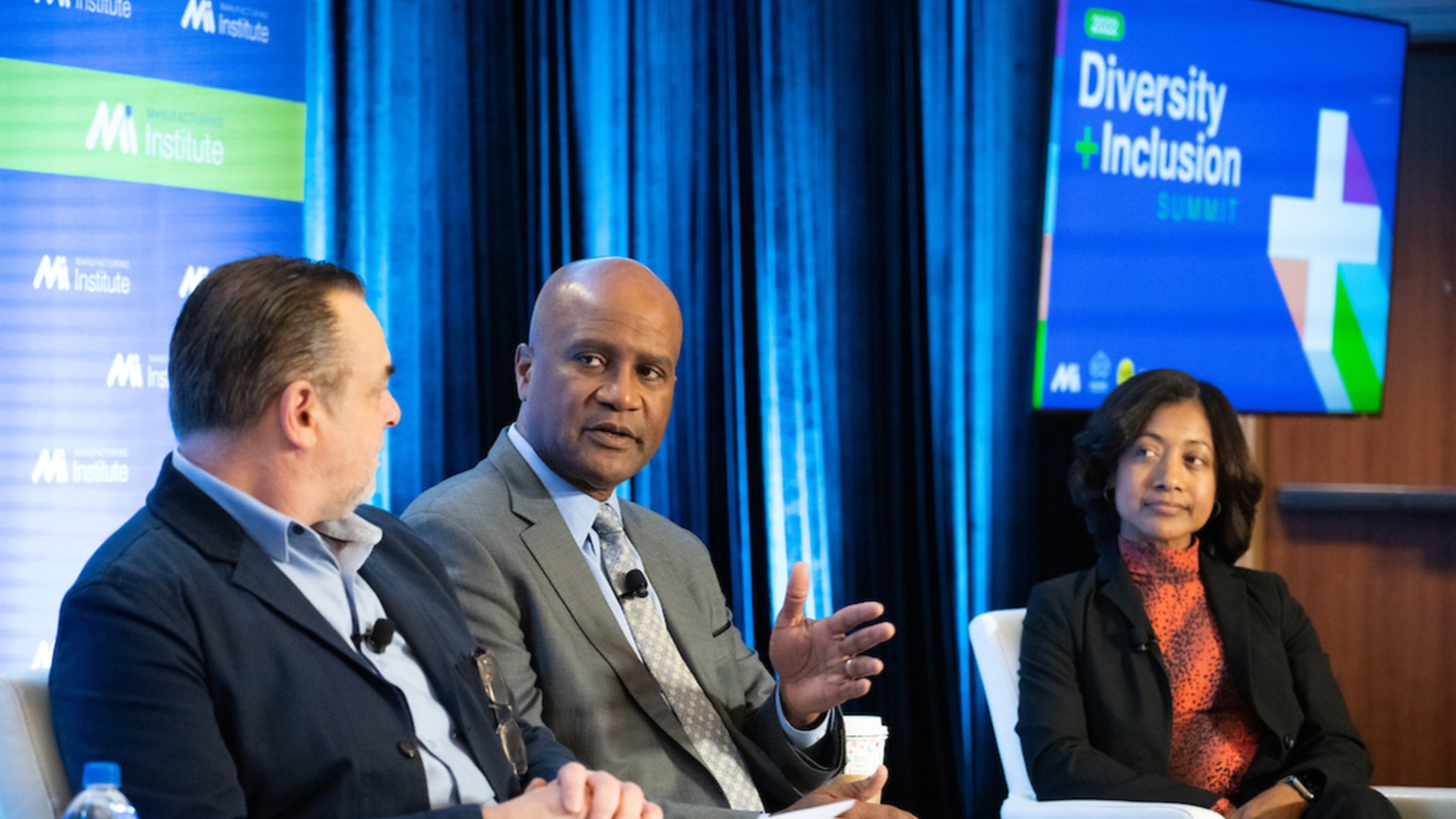
The manufacturing leaders who met in Washington, D.C., this month agreed wholeheartedly: D&I is integral to building and retaining the workforce of tomorrow.
At the third-annual Diversity+Inclusion Summit convened by the Manufacturing Institute, leaders gathered to share data, insights and lessons gleaned from their own D&I efforts. Hailing from many different industry sectors and companies of all sizes, the panelists and attendees laid out concrete actions that can transform companies’ D&I objectives.
Why it matters: With 2.1 million jobs expected to go unfilled in the industry by 2030, manufacturers need to find new populations of potential employees. Recruiting more women, racial and ethnic minorities and neurodiverse workers can expand companies’ talent pools and strengthen their workforces.
- In fact, increasing the current female workforce from 29% to 35% would fill the industry’s 746,000 open jobs all on its own, according to a recent study by the MI and Colonial Life.
- That’s why the MI is working to meet this target through its 35 x 30 Campaign—i.e., increasing the percentage of women in manufacturing to 35% by 2030.
How to do it: The summit offered important tips to help companies boost their D&I efforts, including:
- Get buy-in from company leaders: Research shows that D&I efforts lead to greater productivity, increased innovation and higher revenue—not to mention the recruitment and retention benefits. Once companies set D&I goals, leaders should incorporate D&I objectives into their annual goals to create opportunities for accountability.
- Use employee resource groups in a structured way: Companies should set up organizational structures for their ERGs that will ensure longevity and encourage fresh thinking, as well as align with companies’ overall D&I goals. These groups should have their own budgets and rotating leadership positions. When possible, the contributions of ERG leaders should be included in their incentive programs or annual goals.
- Educate your first-line supervisors about D&I: By training first-line supervisors on the latest in D&I and company-specific objectives, companies can help them both support their teams better and collect feedback to inform the overall effort.
- Offer child care and flexibility: In the post-pandemic environment, companies are still exploring what works best for them, but one thing is clear: to recruit and retain talent in a tight labor market, companies need to provide employees with options. (Check out our recent webinar on the same subject.)
Learn more: Interested in joining the conversation? Check out the MI’s D&I tools and resources, and register for upcoming events, including our upcoming Virtual Diversity+Inclusion Summit on Dec. 16, here. The virtual summit will include some recorded sessions from this event as well.
How Manufacturers Can Leverage Adaptive Skills
Get the Latest News
Get involved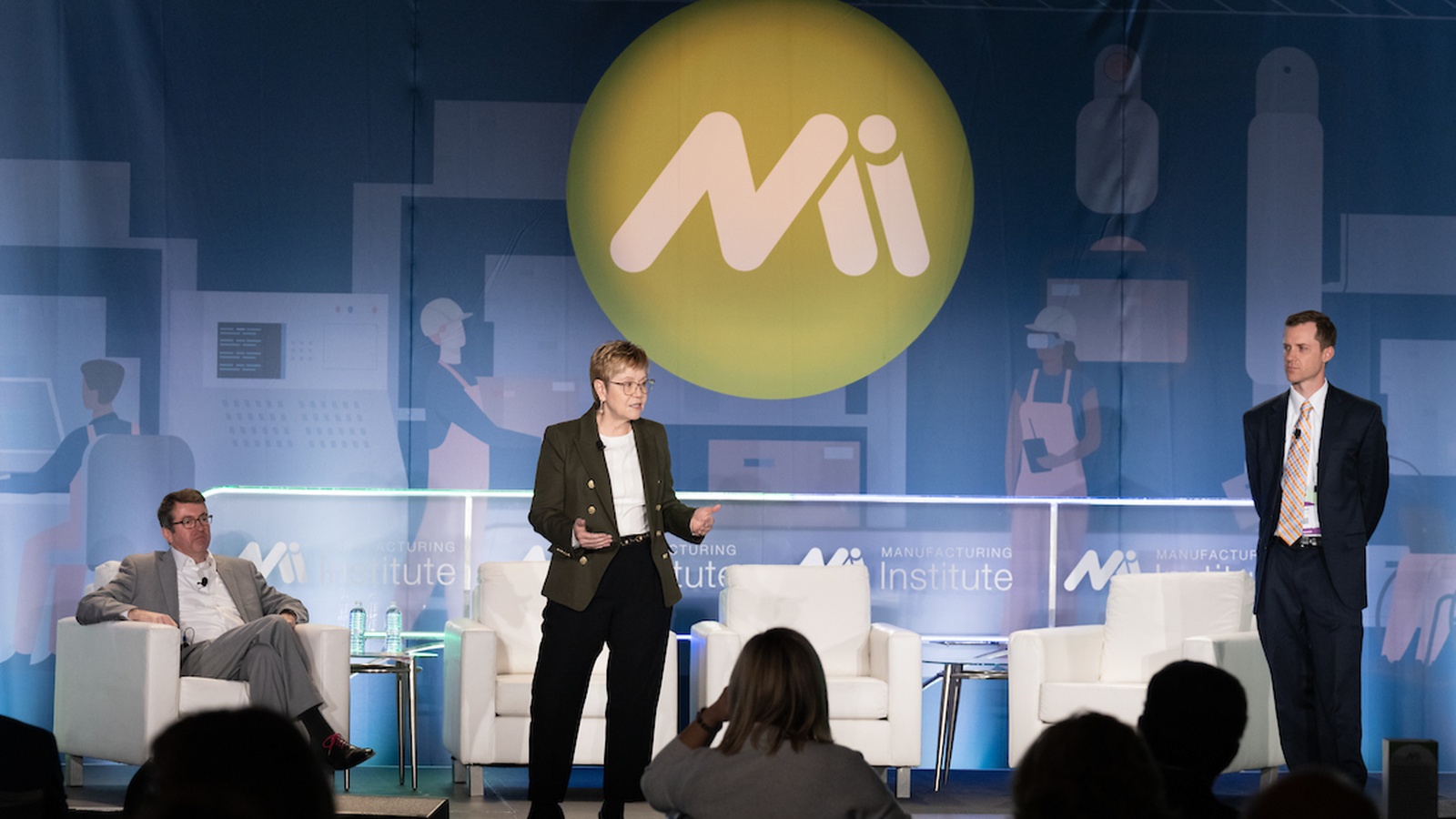
The skills gap is one of the biggest challenges facing manufacturers today—but what if there was a way to overcome it and fill jobs more effectively and easily? In fact, such a method exists, and it’s called “adaptive skills” development.
Timely topic: The Manufacturing Institute’s inaugural Workforce Summit in Cincinnati, Ohio, covered this topic last month, in a session led by two EY partners. Here’s what they had to say.
- “What are adaptive skills? It’s exactly as you would expect: they’re skills that help an individual learn and expand their capabilities to meet an ever-changing job function, business market [or] home environment,” EY Americas Business Consulting Leader Lisa Caldwell told the audience.
- Developing and leveraging these skills, which include communication and problem solving, helps companies retain a broader workforce, according to a recent joint EY–MI study that built on earlier research from EY and Oxford Said Business School, Caldwell said.
- This is particularly important today, as the U.S. workforce could have a shortage of 2.1 million manufacturing jobs by 2030 if the skills gap is not addressed, according to a joint Deloitte–MI study cited by Caldwell.
Manufacturing-specific skills: In their study, the EY and MI identified three specific adaptive skills “that were highly relevant to the manufacturing industry,” said EY People Advisory Services Partner Stephen Fuller during the session.
- Root-cause analysis: The ability “to understand what the root of a problem is, what the data needed to make a decision is,” as Fuller put it.
- Systems thinking: It’s “all about … asking questions. ‘Who does this? Where does this go? How does this work? When does XYZ occur?’”
- Creative reasoning: The key here is the ability to consider problems from unusual perspectives, said Fuller.
Lessons learned: Caldwell shared some of the major study takeaways that manufacturers can use.
- Create an adaptive culture: “[B]uild a culture that … empowers, a culture that wants collaboration, a culture that encourages and recognizes people who speak up, who bring forward ideas.”
- Parlay adaptive skills into new career paths: “If we build career paths and we define the skills and the capabilities that are needed for those career paths, focusing on adaptive skills as much as the technical skills, I think we have something that could really attract people to want to not only come but stay in manufacturing.”
- Invest in individualized learning: This can include rotating jobs, mentoring, shadowing programs and leveraging technology to create experiential learning for employees, said Caldwell.
- Add adaptive skills to your hiring strategy: “It’s really important that we have classroom training and virtual training that isn’t just slides up on a screen, but is very immersive for people and lets them actually feel and experience … what we’re trying to teach them.”
The last word: Ultimately, closing the skills gap “all starts with skills and infusing adaptive skills into your role profiles,” Fuller said. “[Use] it as a way to connect people to learning experiences that are meaningful for them. That’s ultimately the formula for success.”
Building the Future Workforce at Rockwell’s Automation Fair
Get the Latest News
Get involved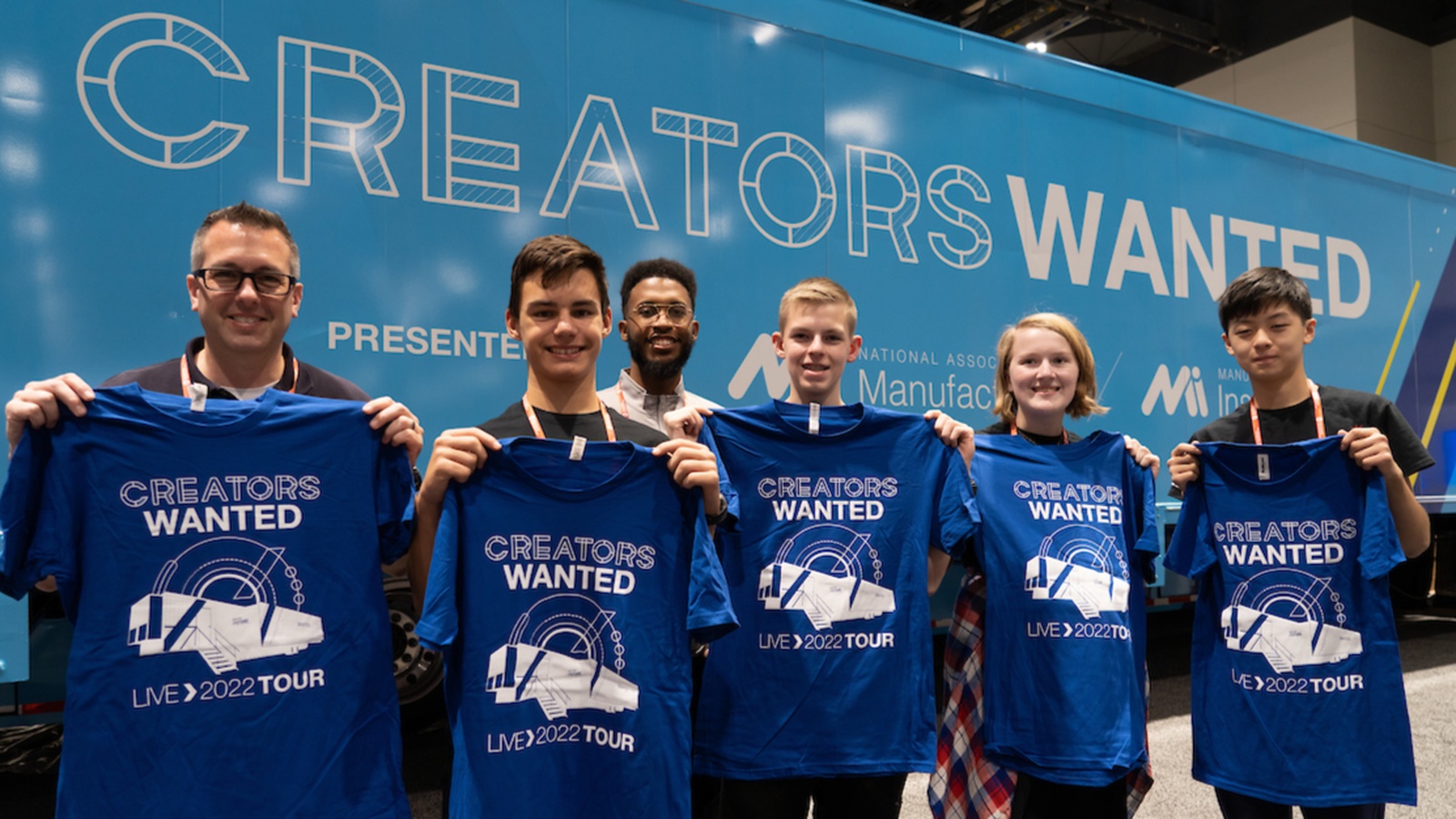
Automation isn’t just changing the manufacturing industry; it’s enabling human-centric progress in tackling the industry’s workforce crisis.
In action: As part of the Automation Fair in Chicago last week, more than 15,000 attendees got to see how manufacturers—and companies like Rockwell Automation—are providing solutions to the shortage, which could reach 2.1 million unfilled jobs by 2030, according to research from the Manufacturing Institute (the workforce development and education partner of the NAM) and Deloitte.
- Rockwell Automation brought the Creators Wanted Tour, a project of the NAM and the MI, to its Automation Fair, giving students, parents, educators and manufacturers the chance to see firsthand how digital transformation and new technologies are supporting careers and opportunities in modern manufacturing.
- The tour’s much-heralded immersive experience, along with displays and programs featuring experts from the MI and the Manufacturing Leadership Council (the digital transformation division of the NAM), gave attendees insight into the pathways and support available in the industry.
- FactoryFix, the official recruiting partner of Creators Wanted, was also on hand to showcase its manufacturing talent platform for job seekers—and manufacturers searching for a one-stop recruiting solution.
Changing perceptions: Creators Wanted aims to shrink the workforce gap by dispelling myths about automation and attracting the next generation to manufacturing jobs. It’s seeing impressive success, MI President Carolyn Lee said during a session at the event.
- “Today 40% of parents have a positive perception of manufacturing,” Lee said, citing a recent joint Deloitte–MI study. “And what we’re finding is that parents see these are durable careers with great possibility and opportunity, and they’re encouraging their children to consider them.”
Digital help: “Digital is going to help manufacturers deal with their workforce issues because it’s going to not only help change the perception of the industry, but create new jobs going forward, particularly in math-intensive areas like data analytics and artificial intelligence,” said MLC Vice President and Executive Director David Brousell.
- Brousell cited the MLC’s “Manufacturing in 2030 Project,” saying, “We have to think about digital transformation as human-centric digital transformation—because we’ve got to bring the technology and the people together simultaneously to have an effective transformation.”
Impressive results: Since it began just more than a year ago, the Creators Wanted Tour has seen more than 8,000 students pass through its immersive mobile experience, where more than 75% of attendees leave with a significantly improved view of manufacturing.
- More than 510,000 students and career mentors have also signed up to learn more about modern manufacturing careers.
- Creators Wanted has recruited successfully both mentors and mentees for the mentorship program of Women MAKE America, an MI initiative that aims to close the gender gap in manufacturing.
- The Automation Fair offered more than 150 interactive sessions on the newest industrial solutions and best practices, and more than 200 companies exhibited across 200,000 square feet at Chicago’s McCormick Place.
Media mentions: The fair and Creators Wanted’s presence drew a slew of media coverage, including from “Morning in America” with Adrienne Bankert, “The John Howell Show” on WLS-AM, Univision Chicago and suburban Chicago’s Daily Herald.
- In addition, the Daily Line published an op-ed on the future of manufacturing by NAM President and CEO Jay Timmons and Rockwell Automation Chairman and CEO and NAM Executive Committee member Blake Moret.
The last word: “As the world’s largest company dedicated to industrial automation and digital transformation, Rockwell is always looking toward the future of manufacturing,” Moret said. “Campaigns like Creators Wanted are critical to recruiting the best future talent to create a thriving workforce.”
Fostering a Diverse, Inclusive Culture at Smithfield
Get the Latest News
Get involvedWhen it comes to diversity and inclusion, Smithfield Foods puts its commitments into action.
The world’s largest pork processor has committed to measurable increases—of 35% and 30%, respectively—in the hiring and promotion of women and individuals in underrepresented groups. And it’s pledged to do it all by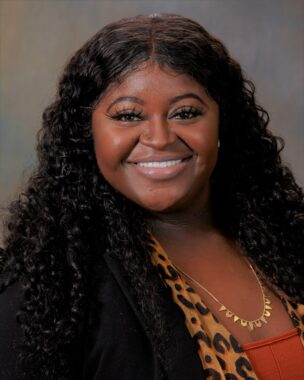 2030.
2030.
Bridging a gap: In September 2020, the Virginia-headquartered manufacturer launched its Operations Leadership Program, created to develop a strong pipeline of diverse talent to fill future management roles.
- “We lead with data. And our data shows there’s a gap in diverse representation between production and management,” said Smithfield Foods Manager of Diversity, Equity & Inclusion Jessica Jones. “The OLP provided us an opportunity to track data on team members, their promotion opportunities, how they’re elevating within the company with a commitment to monitor year-over-year data three years after program completion for each cohort.”
- In just over two years, the program, which garners participants through applications, has seen 132 graduates and nearly 50 promotions.
Providing encouragement: Ironically, many of the same employees the OLP was designed to help were initially reluctant to apply, Jones said.
- “We did focus groups and what we realized is, those who weren’t applying were women and people of color,” she said. “They shared, ‘I don’t think it’s for me,’ and when we heard that, we realized it meant, ‘I never saw myself going higher than my current opportunity.’”
- Smithfield’s leadership began to strategically target their communications to specifically focus on these employees and encourage them to consider the program. “That’s when we started to see the uptick in more women and people of color applying,” Jones said.
Other D&I initiatives: To reach its lofty 2030 diversity and inclusion goals, Smithfield has deployed other programs, too, including the following:
- Smithfield’s Farmer Diversity Program, which aims to increase the number of Black and minority hog farmers in the company’s supply chain;
- A Future Leaders Program that gives scholarships and career opportunities to rising high school seniors through summer internships to increase diversity in leadership;
- An expansion of the Smithfield Foods Scholarship Program for eligible dependents of Smithfield employees so that it includes historically Black colleges and universities; and,
- A supply-chain initiative in which the company has committed to increasing its production-facility spend with minority-owned businesses by 14% by 2025.
The company has also signed NAM’s Pledge for Action, in which manufacturers commit to 50,000 specific actions to increase diversity and inclusion.
The last word: “I have seen this company change and evolve in such a wonderful way,” Jones said. “We now have opportunities to elevate and expose our employee base to Smithfield’s leadership—making sure they have a touch point, a way to connect. Our leadership wants to know how they are doing, prevalent challenges and support needed. The change has been so encouraging.”
Caterpillar Foundation Helps Veterans Find Manufacturing Careers
Get the Latest News
Get involved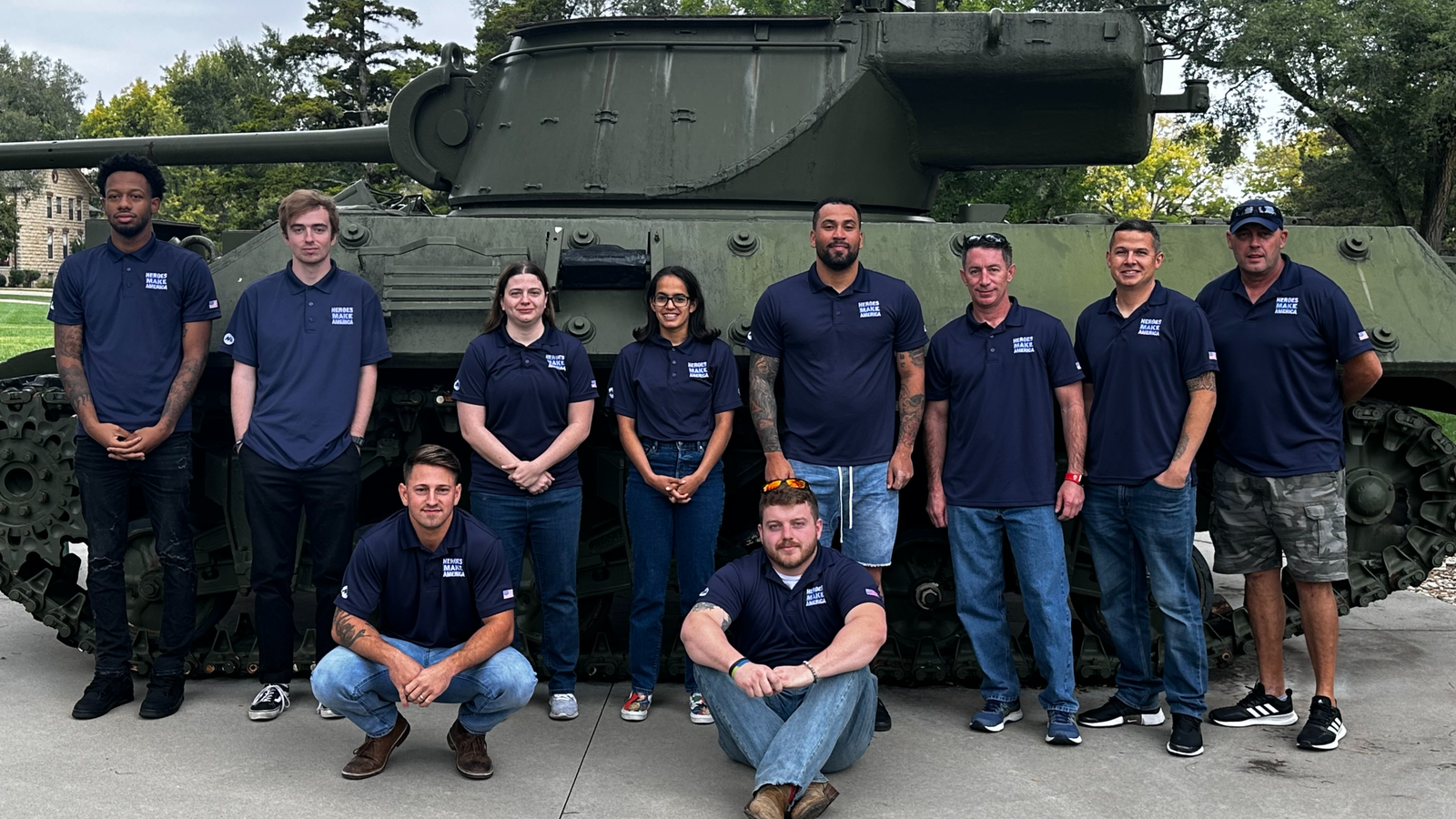
On Veterans Day, we honor the service members who safeguard our country, many of whom will go on to contribute their skills and experiences to civilian industries. Manufacturing is one beneficiary, with many veterans finding that the high-tech, mission-focused industry is an excellent home for their talents.
But how do transitioning service members and veterans find their new career paths? The Caterpillar Foundation is helping America’s heroes become tomorrow’s manufacturing leaders through its support of the Manufacturing Institute’s Heroes MAKE America initiative.
HMA provides integrated certification and career-readiness training in partnership with local community colleges to prepare transitioning service members, veterans, National Guard members, reservists and military spouses for rewarding careers in the manufacturing and supply chain industries.
Virtual training: The Caterpillar Foundation’s support began in 2021 and has helped HMA develop and launch its first 100% virtual training offering in partnership with Texas State Technical College—an exciting option for individuals across the country who might not be able to attend an in-person course.
- The program uses innovative solutions like virtual reality technology, provided by Transfr VR, in order to add a “hands-on” aspect to the students’ training for their Production Technician and OSHA 10 certifications.
- “Heroes MAKE America was great,” said Benjamin Novak, a graduate of Heroes MAKE America’s virtual training program. “The virtual self-paced program allowed me to balance class, transitioning and family life. Getting an opportunity to connect and speak with companies directly was a huge opportunity as well.”
New programs: Additionally, thanks to the foundation’s grant, Heroes MAKE America launched two new in-person training paths: a Mechatronics training program at Fort Hood, Texas, also in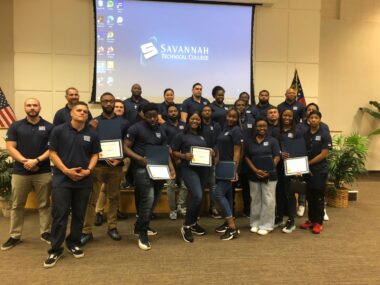 partnership with Texas State Technical College, and a Certified Logistics Technician training program at Fort Stewart/Hunter Army Airfield, Georgia, in partnership with Savannah Technical College.
partnership with Texas State Technical College, and a Certified Logistics Technician training program at Fort Stewart/Hunter Army Airfield, Georgia, in partnership with Savannah Technical College.
- Together, the three new training offerings (the two mentioned above and the virtual option) have graduated 133 participants as of November 2022, with another 40 participants expected to graduate in December.
- “Heroes MAKE America is a great program that wants to see veterans succeed,” said Anna Rabago, a graduate of the Mechatronics training at Fort Hood, Texas. “They helped mold me into a great candidate for manufacturing while earning seven manufacturing certifications. The instructors are subject-matter experts in their field and are willing to work early or late evenings to benefit the soldiers.”
An impressive year: The HMA program is on track to graduate 303 members of the military community across all 6 training sites in 2022, bringing the total number of graduates since the 2018 inception of HMA to 957. The training sites include Fort Hood, Texas; Fort Stewart/Hunter Army Airfield, Georgia; Fort Riley, Kansas; Fort Campbell, Kentucky; Fort Bragg, North Carolina; and the 100% virtual option.
The last word: “HMA provided me with all the tools that I needed to thrive as a civilian,” said Tillman Harris, a graduate of the Production Technician training at Fort Bragg, North Carolina. “They provided industry training, résumé assistance, interview prep and much more. Trust in yourself and have confidence in everything you do. HMA is a program that cares about us and wants us to succeed.”
Learn more: Find out more about Heroes MAKE America here.
